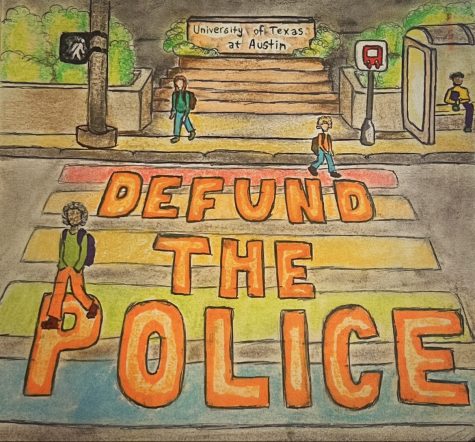UT should add a “multiracial” option on college application
September 20, 2022
As the leaves turn brown and the air gets crisper, high school seniors across the nation know that means one thing: college application season. As a prospective University of Texas student, I sat anxiously at my computer a year ago, filling out what should have been the easiest portion of the application.
As a biracial individual, college applications brought yet another soul-searching, confusing challenge in regard to my self-identification. When filling out the race category of my application, I scanned all the way through to the very last box and found myself disappointed.
Of the roughly six boxes given, none accurately described me. Much like every other “self-identification” portion of papers I’ve filled out, there was no box indicating “biracial” or “multiracial.” Instead, the application requested that one fill out “every box that applies.”
On the surface, there is absolutely no problem indicating the specificity regarding where I’m from.
After all, I am both Asian and white, right?
Not exactly.
Myself, along with many other biracial kids my age, solely identify as “mixed-race” or “biracial.” While this term is not nearly a one-size-fits-all concept, simply having the option creates a much more inclusive space on UT’s college application.
Requiring a breakdown through a “select all that apply” format essentially strips the idea of racial identity down to its components, rather than taking a holistic view, which is what a box like “biracial” or “mixed-race” would more accurately encompass.
“UT Austin uses federal reporting guidelines when it asks for race and ethnicity on its common application,” Kathleen Harrison, assistant director of marketing and communications, said in an email.
Many other colleges, however, include their own college-specific racial identification section outside of the one provided by a college application site to gain more specific knowledge about their applying class.
Multiracial individuals only compose about 3.65% of UT’s student body. However, this percentage may not be completely accurate as some mixed-race students identify more with one portion of their racial background.
Government junior William Valverde explained how he navigates his racial identity.
“There’s times where I choose mixed-race/multiracial or I just choose Black,” Valverde said. “The reason why a lot of times I choose Black is because multiracial is way too broad. I would describe myself as Black, if I had to be given the choice, because that’s the background that I grew up in. That’s the culture that I grew up in — African American culture — so I feel more at home when I can label myself as Black.”
While it’s understandable that “multiracial” can be deemed too broad an option for both some members within the community and data-taking measures, UT could add a specification option upon the selection of “mixed-race.” By doing so, UT will still be able to collect their potentially required data.
Most importantly, it will provide an opportunity to create less exclusive language for mixed-race students and give them the choice to identify with an option they resonate with. Such measures could be a more comprehensive section for those within the mixed-race community.
As more light is shed on the challenges that multiracial individuals face, UT should respond by standardizing the inclusion of the “multiracial” option on their application to foster a more inclusive space for students.
Carr is a journalism freshman from Dallas, Texas.











